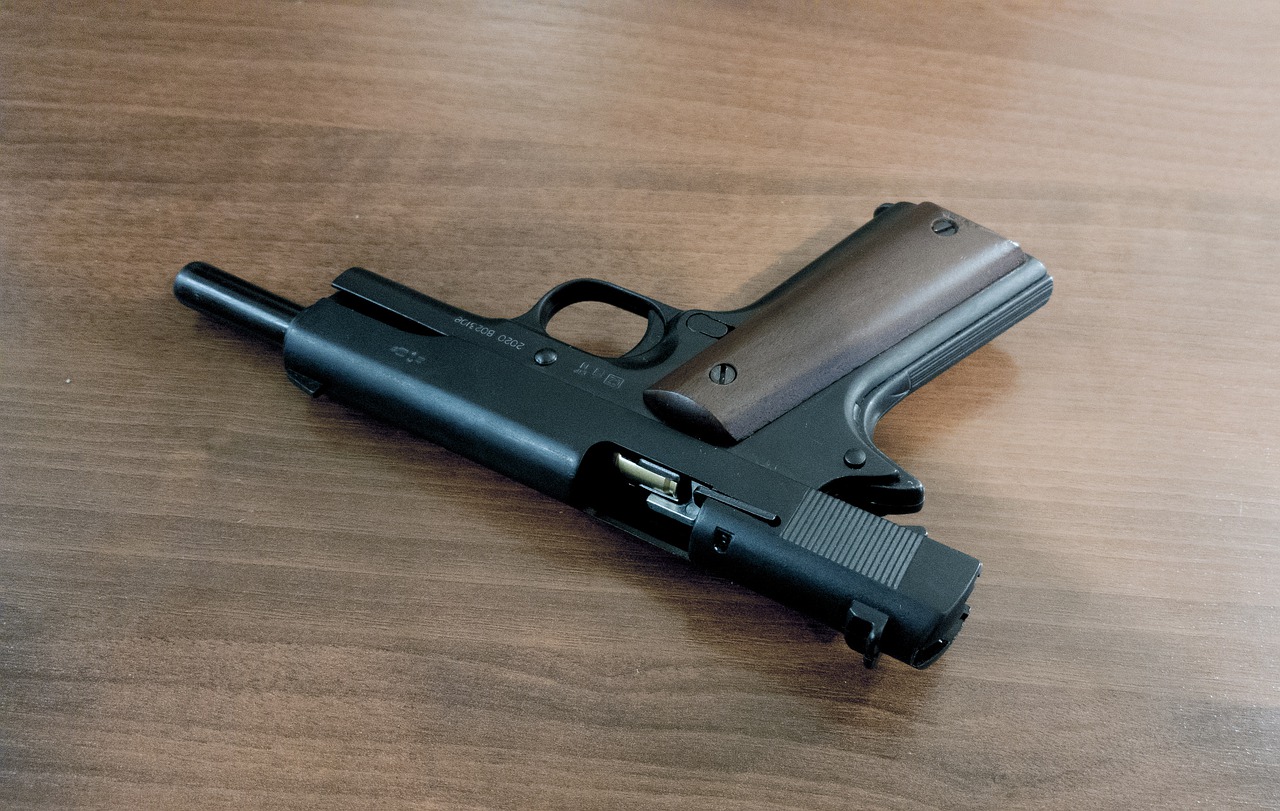Why Firearm Safety is Important
Posted by Jessica Koenes on Feb 4th 2022
Gun safety is important to all gun owners and how following basic firearm safety can actually prevent you from having an accident. Learn these critical & crucial tips!
It's important to keep your firearm safety skills up-to-date. Whether you're holstering or unholstering a gun or checking the chamber and magazine area for obstruction before each shot fired can save lives!
Firearm Safety
Guns are everywhere. You see them in motion pictures, you hear about them on news outlets, you even listen to music where they are mentioned in lyrical narratives. The use of firearms may seem like a casual thing with how frequently guns are present throughout the world today, but firearms need to be taken seriously. Too often homeowners romanticize the idea of owning a gun and using it to protect themselves and those they love against an intruder. They forget how dangerous having a gun in a real life intruder scenario can be. Guns can kill you in three ways: homicide, suicide, or accident. This is why firearm safety is imperative. Knowing your safety protocols is an important step for two reasons. One, it keeps you safe and two, it helps break the “fear of gun” stigmas that are becoming more and more common.

Why Gun Safety is Important
It is hard to get a firm number on how many Americans own a firearm, but it is estimated that about 40% of Americans claim that someone in their household owns a gun. Unfortunately, accidental shootings are the cause of the majority of gun related deaths for children under the age of 14.
It only takes a moment for a child to hurt themselves or others when they have unsupervised access to a firearm. When a child is young and is not taught firearm safety, they are not likely to know the difference between a real or toy gun. Even if you raise your children to understand gun safety and expectations, there is no guarantee that their friends would have the same understanding. Make sure you are being responsible with your firearms and keep them in a locked location where children cannot access your firearms.
Be Aware
Knowing the scenarios will help increase the safety of your home and how you handle your firearms.
High-risk firearm scenarios to consider are:
- Teenage boys are at the highest risk. The majority of accidental deaths from firearms are when teenage boys gain access to firearms. Just be aware of the higher risk based on gender and age. Curiosity and interest in firearms absolutely plays a role in this factor.
- Alcohol or drug abuse increases the risk of accidents with firearms. According to studies, the chances of accidental deaths due to firearms exponentially increase when illegal drugs are factored into the scenario.
- Storing your ammunition in the same place you store your firearms. Keeping the ammunition in a separate location and making sure your firearms are not loaded is an effective way to reduce the risk significantly. This makes the likelihood of an accidental shooting decrease due to the forethought that needs to go into gathering the ammunition to shoot a firearm.
- Underestimating your child’s ability to access a firearm in your home. Kids are smart. It is important to realize that they observe a lot more than you may realize and they have the ability to pull a trigger if they can access a firearm. Never assume that your child does not have the ability to access your firearm. Be even more vigilant if your child is suffering with suicidal thoughts or depression.
- When your child visits a friend, they may be able to access a firearm at someone else’s home. Your child will most likely be at other people’s homes throughout their lifetime. Just know, not everyone is aware of the safety protocols for storing a weapon. Not everyone is considering if their firearms are child accessible or not.
- Most accidents happen when there is a lack of supervision. According to studies, the majority of accidents happen when parents are not around and the statistics for accidental shootings of minors increases with the absence of supervision.
You do not need to be fearful of firearms, but you should be aware of the high risk scenarios and know the importance of firearm safety.

Training by StockSnap from Pixabay
Now What
Okay, okay.. We got the hard part out of the way. As a firm believer in owning firearms, it is never fun to go into the worst case scenarios, but when you know better, you can do better. The truth is, even though accidents happen, there are safety protocols you can put into place to help keep you and your loved ones safe. There are a few basic firearm safety protocols that you should have in place whenever firearms are present. Not only should these safety protocols be known, but they should be part of your habits, routines, and rituals whenever you handle a firearm.
4 Firearm Safety Rules
The main overall focus of these rules are just not to assume. Do not put your guard down when handling a weapon capable of killing. Nor should you put your guard down when around someone handling a firearm. Accidents happen, but to help minimize them, respect the weight and responsibility of owning a firearm and the damage it can cause.
- Only point a firearm at something you are wanting to shoot. Just an obvious rule. Do NOT go pointing your gun around all willy nilly. It is called a weapon for a reason. It has the capacity to kill and should be treated as such. Wherever you point a gun, pretend it is going to shoot. If you take that approach, you are less likely to hurt someone and more likely to stay safe. DO NOT POINT A FIREARM AT SOMEONE UNLESS YOU AIM TO KILL. Accidents happen. Just always be aware of where your muzzle is pointed.
- Always assume the firearm is loaded. Yup. This one ties into the idea of not pointing your weapon somewhere you don’t want to shoot. How does that saying go, “assuming makes an a** out of you”? Well in this case, you want to assume. IF you are assuming the gun is loaded, you treat it with the same respect it deserves.
- Keep your finger off the trigger until you are ready to shoot. Wait… this one ties in too? Yep! Sure does! Why have your finger on something that you do not intend to pull. Keep your fingers in the safety position until you are aimed in and ready to shoot.
- Be aware of your surroundings. Know what you are around and who is around when handling a firearm. You are more likely to stay safe and not have an accident if you are aware of all the people and things around you. Do not get caught off guard or spooked while holding a weapon. Know what is in your aim and alway what is behind it. Be aware and stay safe.
More than anything, staying firm on these safety procedures will ensure that you appreciate the proper respect of firearms whenever you are around them or using them. Teaching these to your children from a young age can help save lives and maintaining consistent rituals will ensure that you keep others out of harm's way when handling a weapon.
Resources:
https://www.pwgrange.com/firearms-training-safety/
https://goodmenproject.com/education-2/the-critical-importance-of-gun-safety-wcz/
